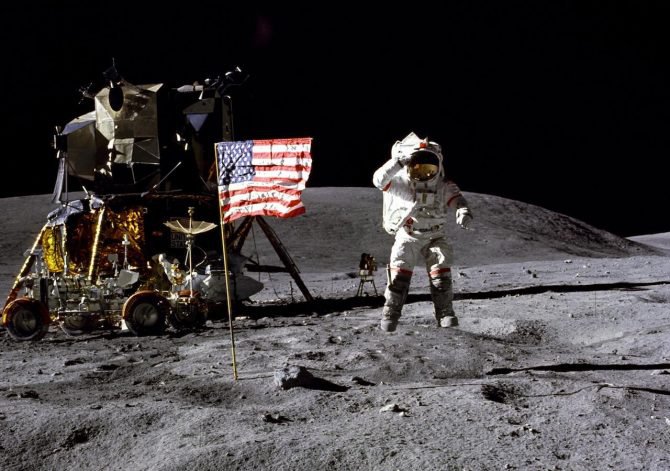
April 23, 2019
Research Highlight
The Origin of Lunar Volatiles
Study on lunar sample 66095, returned to Earth by Apollo 16

Astronaut John Young of the Apollo 16 mission on the Moon.Image credit: NASA.
Scientists have reported copper (Cu) and iron (Fe) isotope data from a lunar sample 66095 (dubbed ‘Rusty Rock’). This sample of lunar material was returned to Earth by the crew of Apollo 16 in 1972. Apollo 16 was the fifth human mission to land on the Moon, and allowed astronauts to spend eleven days at the Descartes site in the lunar highlands sampling two volcanic constructional units.
The recent study reports that Rusty Rock is an impact melt breccia that is rich in volatiles. Data indicates that these volatiles originated from a source inside the Moon, and were incorporated into the sample through vapor condensation. Previous remote sensing studies of the Moon detected volatiles at the lunar surface, but they were attributed to the solar wind. This new study of Rusty Rock indicates that at least some of the volatiles on the lunar surface must originate from the Moon’s interior.
The study, “Volatile distributions in and on the Moon revealed by Cu and Fe isotopes in the ‘Rusty Rock’ 66095,” was published in the journal Geochimica et Cosmochimica Acta. This work was supported by the Emerging Worlds Program. The NASA Astrobiology Program provides resources for Emerging Worlds and other Research and Analysis programs within the NASA Science Mission Directorate (SMD) that solicit proposals relevant to astrobiology research.